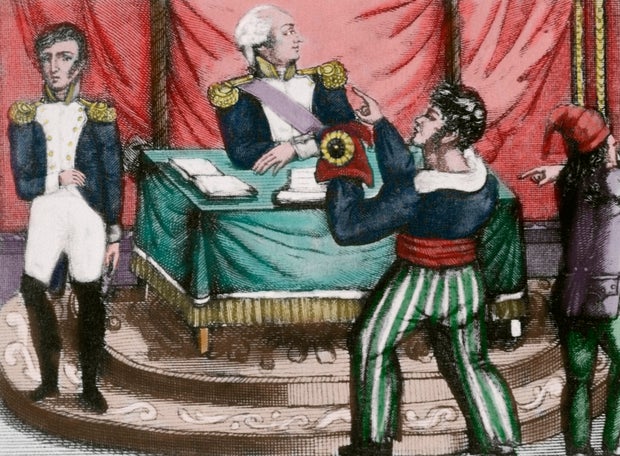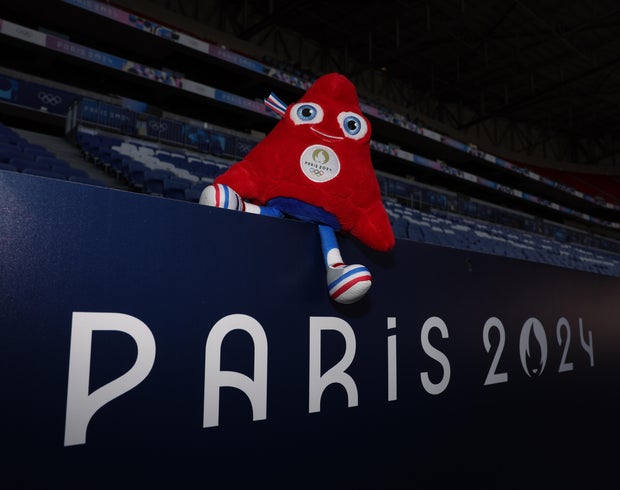At first glance, the mascot for the 2024 Paris Olympic Games may look like a red triangle with arms, but it’s actually a Phrygian cap — a symbol of freedom in France’s history.
The mascot for both the Olympics and Paralympics was announced in 2022 with a mission of showing the world “that sport can change everything and that it deserves to have a central role in society,” according to the Olympics website.
“We wanted mascots that would embody our vision and be able to share it with the French people and the world,” 2024 Paris Games President Tony Estanguet said at the launch. “Rather than an animal, our mascots represent an ideal. The Phrygian cap is a symbol of liberty. Since it is familiar to us and appears on our stamps and the pediments of our town halls, it also represents French identity and spirit.”
The Phryges, pronounced “free-jes,” are also meant to encourage people to get active.
Where did the Phrygian cap come from?
The Phrygian cap was worn in present-day Turkey as early as 800 B.C., according to Architect of the Capitol. It was viewed as a mark of free men in classical Greece, where freed slaves wore the hat.
The peaked red hat has been a part of French history for centuries and was widely popularized by French revolutionaries, donned during the French Revolution of 1789. It can be seen on busts of Marianne, a woman considered “the embodiment of the French Republic,” according to Olympics organizers.
PHAS/Universal Images Group via Getty Images
The caps were worn when Paris’ Notre-Dame cathedral was being built in 1163, according to the Olympics. Workers building the Eiffel Tower also wore the red hats.
Phrygian caps also made their way to the U.S., according to Architect of the Capitol, the hat appeared in images from the American Revolution. It was used in early 19th century American art and coins.
The Olympic and Paralympic Phryge
The official Olympic website describes the mascot as a thoughtful and astute strategist.
“Just like the Olympic athletes, she knows the importance of measuring all the various parameters to achieve her goals. With her sharp mind, she is modest and prefers to hide her emotions,” the website description reads. “The Olympic Phryge will lead the movement of all those who take part in sport, and believe us, she will give her all to get France moving!”
claudio_villa / Getty Images
A version of the mascot for the Paralympics has a running prosthetic.
“Her passion is to blaze a trail; some might say she is fearless, which might be true, but one thing is certain: she hates being bored and loves to try new things,” the website description reads. “No matter the sport, and regardless of whether she competes as part of a team or on her own, she is always game to play.”
What are past Olympic mascots?
The mascots chosen for the Olympic and Paralympic games each year are considered ambassadors embodying the spirit of the Olympics, according to the Olympics. They’ve been around since the 1968 Games, when the Winter Games were hosted in Grenoble, France. The first mascot was a little man, named Shuss, on skis. While the Paris mascot was chosen well in advance, Shuss was designed in a hurry — his designer had just one night to prepare a submission.
The 1972 Munich Games featured Waldi, a dachshund. Waldi was the first mascot in the history of the Olympic Summer Games.
Since then, there’s been Schneemandl the snowman, Amik the beaver, Sam the eagle, Hodori the tiger and Bing Dwen Dwen, among other characters.
“They’re tasked with giving concrete form to the Olympic spirit, spreading the values highlighted at each edition of the Games; promoting the history and culture of the host city; and giving the event a festive atmosphere,” according to the Olympics.


